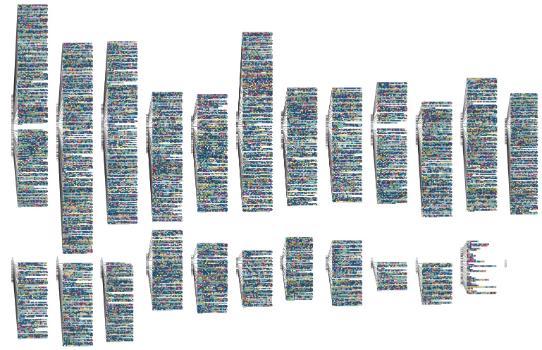Open access data sharing: Is it working in genomics?
A blog post by Professor Mike Thewall about the data sharing of Genome-Wide Association Study (GWAS) summary statistics, in celebration of Open Access Week.

Researchers sharing data generated during their research give at least three benefits to science: others can check the methods, improving research transparency; the data might be used by others for new studies; and researchers can learn methods with the aid of the shared data. Data sharing is increasingly mandated by journals and funding organisations because of these benefits.
We ran a project to assess whether one type of data was usually shared: Genome-Wide Association Study (GWAS) summary statistics. These are huge files recording genome characteristics of a sample of people, connecting them statistically to health problems or other personal characteristics. This data seems ideal for sharing because it is high value and expensive to collect but can be stored in a simple format and is relatively easy for others to use. For example, it is relatively straightforward to combine multiple datasets for increased statistical power. GWAS data sharing is mandated by some funders and it is often shared internally by international research groups, ensuring that it is well documented and portable.
We checked 314 primary human GWAS articles from 2010 and 2017 to see if they shared their summary statistics, but found only 3% did in 2010, rising to 23% in 2017, with some citing ethical constraints with sharing human-associated data (Thelwall, et al., 2020). This suggests that researchers can be reluctant to share even standardised and widely useful data, so journal mandates may be necessary for it to become near-universal.
View the open access article on Plos One about this project: Is useful research data usually shared? An investigation of genome-wide association study summary statistics Thelwall, M. Munafò, M., Mas-Bleda, A., Stuart, E., Makita, M., Weigert, V., Khan, N., Drax, K. & Kousha, K. (2020).
The image is of the chromosomes in the human genome, with each tiny coloured dot representing a GWAS paper that found a relationship between one point on a chromosome and a human characteristic, such as susceptibility to diabetes. Image source: https://www.ebi.ac.uk/gwas/diagram.
This blog post is one of the pieces shared on the Library News page as part of Open Access week.
For more information please contact the Corporate Communications Team.


/prod01/wlvacuk/media/departments/digital-content-and-communications/images-18-19/iStock-163641275.jpg)
/prod01/wlvacuk/media/departments/digital-content-and-communications/images-2024/250630-SciFest-1-group-photo-resized-800x450.png)
/prod01/wlvacuk/media/departments/digital-content-and-communications/images-18-19/210818-Iza-and-Mattia-Resized.jpg)
/prod01/wlvacuk/media/departments/digital-content-and-communications/images/Maria-Serria-(teaser-image).jpg)
/prod01/wlvacuk/media/departments/digital-content-and-communications/images-2024/241014-Cyber4ME-Project-Resized.jpg)
/prod01/wlvacuk/media/departments/digital-content-and-communications/images-18-19/210705-bric_LAND_ATTIC_v2_resized.jpg)